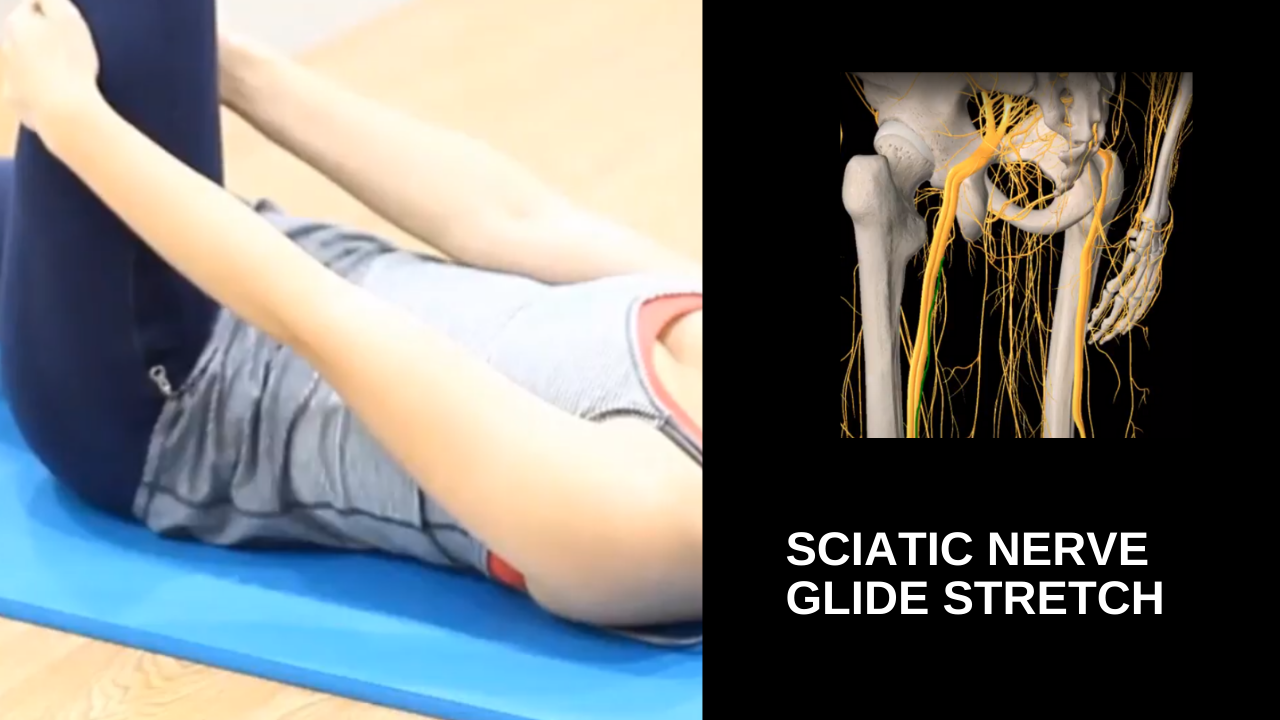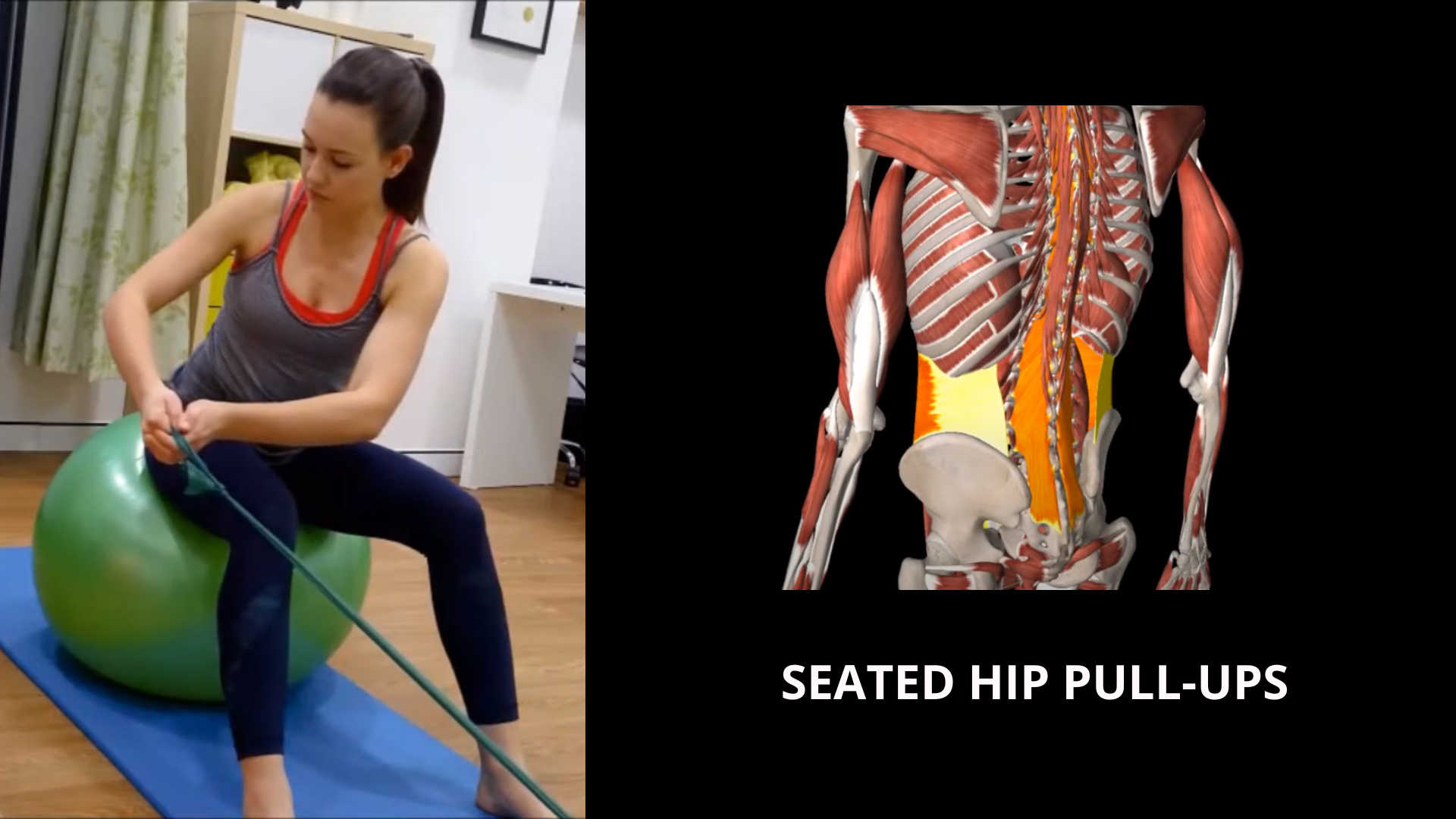Core activation
This supine core exercise targets deep abdominal muscles to support and protect the lower back. Ideal for anyone with back pain, desk workers, and individuals aiming to enhance core stability, it strengthens the core, reduces strain, and promotes better posture and back health.
Sciatic nerve glide stretch
The lying sciatic nerve glide stretch helps relieve tension along the sciatic nerve, reducing pain and improving flexibility in the lower back, glutes, and legs. Ideal for those with sciatica or nerve-related discomfort, this exercise promotes gentle nerve mobility, easing stiffness and enhancing comfort in daily activities.
Core plank with ball roll
The hip and back advanced strengthening exercise targets core stability and lower body strength, essential for supporting functional movement and reducing injury risk. Ideal for newly pregnant women who are recovering from back issues, and anyone looking to improve overall stability. This exercise enhances hip power and back endurance for improved performance and resilience.
Seated hip pull-ups
The seated-on-ball pull-ups against a resistance band exercise targets back and hip strength, making it effective for rehabilitation. Ideal for improving stability and control, this movement supports back alignment, strengthens hip muscles, and enhances core engagement for a balanced recovery.
Core stability and control
How core muscles are protectors of your spine, and how do you make sure that their natural muscle tone supports your posture. The key is not to consciously keep your core activated - that is a very outdated. The key is to have that core muscle tone so it supports you without thinking about. That is core stability and core control!
Sacro-iliac joint pain
A high percentage of lower back pain originates from the sacroiliac joint (SIJ), a common but often overlooked source of discomfort. The good news? SIJ-related pain is highly treatable. With targeted assessment and therapy, our physios can help relieve your pain and restore comfortable movement.








